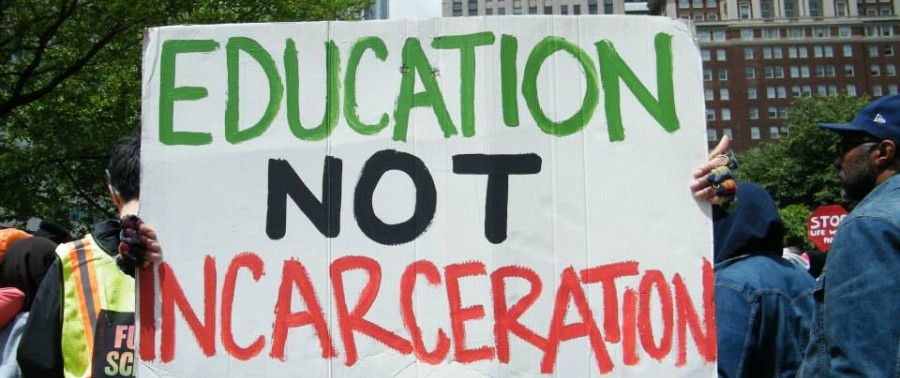This website is dedicated to the grassroots movements across the nation who are fighting to end the School-to-Prison Pipeline (STPP).
What is the School-to-Prison Pipeline?
The school to prison pipeline is the pervasive process by which students are pushed out of schools and into the juvenile and criminal justice system.
How Does it work?
“Zero tolerance” policies are defined as “a school or district policy that mandates predetermined consequences or punishments for specific offenses”1 Zero tolerance polices started with the federal government’s passage of the Gun-Free Schools Act of 1994, which required states to pass laws mandating the automatic expulsion of students from public schools for possessing a weapon 2. In many schools, zero tolerance polices have been expanded to include increasingly minor offenses, such that students are subject to automatic suspension or expulsion for drug and alcohol violations, fighting, and damage to property. Schools have started policing increasingly trivial behavior, to the point where students are suspended for talking back to adults, being late to school, cutting class, smoking, making graffiti, breaking dress code, using profanity, disrupting class, or even refusing to turn off a cellphone.3 These excessive, and rigid disciplinary policies unfairly criminalize youth. Zero tolerance policies have led to schools involving the police and juvenile courts system in school disciplinary issues, and have drastically increased the use of out-of-school suspensions, expulsions, transfers to alternative schools, referrals to law enforcement agencies, and school-based arrests.6 Under zero-tolerance policies, these harsh sanctions are handed down automatically, regardless of circumstance, and often without due process.
When students are suspended from school they fall behind in their studies, and are far more likely to fail or drop out. When they are forced out of school they are far more likely to commit crimes in their communities, and students who are suspended or expelled from school are three times more likely to come into contact with the juvenile justice system the following year. Students who enter the juvenile justice system have major difficulties gaining reentry into traditional schools, and the majority of incarcerated students never graduate from high school.4
Who is Affected?
Zero-tolerance policies affect low-income minority students at extremely disproportionate rates, and have led to students of color students facing disproportionately harsher punishments than white students in schools. High-stakes testing gives schools an incentive to push out their lowest performing students – which are often low-income minority students. De-facto partnerships with law enforcement officials, and the growing presence of police in schools also leads to black males being targeted at disproportionate rates.22 Black students are suspended and expelled three times more often than white students are.5
